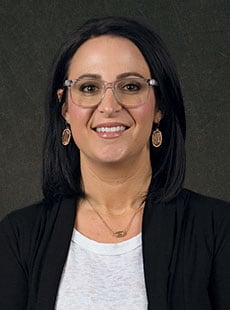 Course Introduction
Course Introduction
Core Standards of the Course
STRAND 1
Students will review the elements and principles of design. (Interior Design 1 STRAND 3, 4, 5, & 6) (Suggested 1-2 days)
STRAND 2
Students will identify architectural features and styles.
Standard 1
Identify the American adaptations of housing styles and architectural features such as:
-
Figure of Type, Picture &Key elements
-
Tudor
-
Spanish
-
Cape Cod
-
Georgian
-
Greek Revival
-
Victorian Queen Anne
-
Prairie
-
Craftsman/Bungalow
-
Midcentury Modern
-
Art Deco
-
Contemporary/ Modern
Performance Skills
Complete a project related to architectural styles and features. (Architectural tour, scavenger hunt, presentation etc.?¦)
STRAND 3
Students will understand components of construction documents - a set of plans that a builder uses.
Standard 1
The components of construction documents are the site plan, floor plan, interior and exterior elevations and the electrical plans.
-
Identify and discuss the site plan - a drawing of the building location on the lot.
-
Identify and discuss the floor plan as a 2-D scaled drawing that shows the layout of the rooms with blueprint symbols.
-
Identify and discuss elevations as a 2-D representation of a given side of a building or inside wall details.
-
Identify and discuss the electrical plan which shows lighting, switches, outlets, TV, phone and computer outlets.
Performance Skills
Draw or draft a portion of a floor plan by hand or digital. Use a minimum of 3 attached rooms. (Can be commercial, residential, or use the FCCLA scenario.)
-
Use good line quality in 1/4 inch scale.
-
Label each room, including room dimension and name.
-
Furnish each room using correct space planning guidelines.
-
Plan is neat and clean with professional lettering and a legend.
STRAND 4
Students will identify and explain various textiles.
Standard 1
Identify various textiles and factors that lead to the selection of specific textiles. Identify natural textiles (cotton, linen, silk, wool) - come from plants or animals. Insert indicator text Identify manufactured textiles
-
Synthetic - made with chemicals (acrylic, nylon, olefin, polyester)
-
Cellulosic - made from plant material chemically converted to a soluble compound (acetate, rayon) Identify basic weaves and finishes (plain, twill, satin, Jacquard, purpose of finishes).
-
Image: Weave name; Description; Characteristics
- Plain; Formed by interlacing yams one over, one under in regular sequence; Simple basicweave that wears evenly.
- Twill; Formed by "floating" one warp thread overtwo or three weft threads, then under one. This creates a diagonal wale; Produces a firm, strong fabric with a visible diagonal line.
- Satin; Formed by :floating one warp thread over four or more weft yarns then uner one thread. The order of interlacing is staggered so the result is a smooth face with no wales; The floats gives satin fabric its sheen.
- Jacquard; An intricate, variegated weave made by lifting any number of warp threads and any number of weft threads to create a woven pattern in the fabric;The weaves are created on a Jacquard loom. Creates brocades, tapestries, and damask. Used for daraperies and upholstery.
STRAND 5
Students will identify and explain various flooring and wall treatments.
Standard 1
Identify floor treatments and factors that lead to their selection.
-
Discuss the characteristics of flooring types:
- Hard: durable, dent resistance, long lasting (wood - strip, plank, parquet; tile, ceramic tile, porcelain tile, and natural stone - marble, granite, slate, travertine)
- Engineered: similar to hard wood with a plywood underlayer, wears well, no gaps, no weather change, no need to refinish.
- Resilient: durable, wears well, returns to original shape after stress, quieter to walk on (vinyl) Luxury Vinyl Plank (LVP)
- Soft: hardest to clean, will wear out, made from woven fibers (carpet, rugs).
-
Discuss characteristics of carpet fibers.
-
Discuss carpet terms and how they affect quality and selection
Standard 2
Identify ceiling and wall treatments and factors that lead to their selection.
-
Paint is darker when dry. Choose a paint color that is slightly lighter than the one desired.
-
Discuss paint types
-
Discuss paint finishes
- flat - reflects very little light, least washable.
- eggshell - small amount of shine, more washable than flat.
- satin - smooth, velvety look with a bit more gloss, easy to keep clean.
- semi-gloss - used most in residences, subtle shine, very washable.
- high gloss - shiniest, most durable and easiest to clean but shows more imperfections on the wall.
-
Discuss appropriate wallpaper and terminology.
-
Discuss the various types of molding - strips of shaped wood used for trim or ornamentation in a room.
Standard 3
Identify window treatments and factors that lead to their selection. Identify the types of window treatments
-
Discuss window treatment considerations
- direction of window: north - insulation, little light control; east - light control in a.m. south - a lot of light control, west - hot piercing light in p.m.
- light control: consider use of room (theatre, bedroom, etc.)
- shape of window: tall, narrow, arched, wide, short
- purpose of window: view, light, ventilation
- style of room: theme, décor, formality
- cost: wide range of prices
- maintenance: cleaning and care
- energy efficiency: keep heat/cold in or out
- privacy/security
-
Identify the types of window treatments
Standard 4
Discuss types and uses of light.
-
Discuss natural light
-
Discuss types of artificial light.
- incandescent - gives a yellow glow to rooms, uses more energy than other lighting types
- fluorescent - gives a blue glow and diffused, shadow less light
- halogen - expensive but long-lasting, bright, white light, most like sunlight, very hot bulbs
- LED-light emitting diode - More expensive bulb but can last up to 25 years, no heat, consumes less energy, more cost effective.
-
Discuss the uses of artificial light.
- general - provides enough light so you can see everything in the room.
- ceiling - lights mounted on the ceiling including surface mounted, semi- surface mounted, pen- dants, and chandeliers
- recessed - light fixtures hidden in the ceiling such as can lights or eyeball lights
- wall - lights mounted on the wall such as sconces
- task - focus light on the area where it is most needed, used for close-up activities.
- strip - a series of bulbs mounted together in a line
- accent/decorative - provides a concentrated beam of light that focuses on a decorative object or area.
- cove - a light placed just below the ceiling with a board or deflector beneath it
- portable - such as lamps or clip on lights
- track - lighting mounted on a metal strip that allows fixtures to be placed anywhere along the strip
STRAND 6
Students will distinguish features of selected furniture styles and characteristics of quality furniture. Furniture styles combined like housing.
Standard 1
Identify parts and features of furniture.
-
Identify examples of legs
-
Identify examples of feet.
-
Identify chair backs
-
Identify decorative features
Standard 2
Identify illustrations of chair types
Standard 3
Discuss construction techniques used in upholstered furniture
-
Identify construction considerations used in upholstered furniture
-
Padding: for shaping, soften cushions, prolongs fabric life (batting, down) Insert indicator text
-
Springs:
-
Cushions (seams, welts and cording should be smooth, patterns should match, zippers should be sewn straight, sufficient padding, tightly woven fabric
Standard 4
Identify case goods
Standard 5
Discuss the construction techniques used in case goods (wood furniture used for storage).
-
Identify types of joints
-
Discuss the characteristics and uses of hardwoods (deciduous trees that lose their leaves: birch, cherry, mahogany, maple, oak, walnut) - more durable and dent resistant, preferred for fine furniture.
-
Discuss the characteristics and uses of soft woods (coniferous cone-bearing trees: cedar, pine, red- wood, spruce, cypress, fir) - can develop cracks and dents, less expensive.
-
Discuss and identify the various finishes - the process of embellishing and/or protecting the surface of a wooden material used on case goods
-
Discuss the use of manufactured lumber
- particleboard - made by combining chips of wood with resin and compressing the mixture to form a larger piece of wood
- plywood - made by laminating thin layers of inexpensive wood together, with the grain of each layer turned 90 degrees
- veneers - thin sheets layer of finished wood used as a top surface over other less expensive material in case goods.
Performance Skills
Complete a project related to furniture styles and features.
STRAND 7
Students will understand the elements of an appropriate visual presentation.
Standard 1
Students review the criteria for presentation boards. (See Interior Design 1 STRAND 7 Standard 1)
-
A presentation board is a visual representation used to sell the designer's ideas to a potential client. It will show the following:
- Colors scheme
- Design ideas
- Textures
- Accessories
- Fabric choices
- Furniture choices & layout
- Use a white or black board
- Determine materials finishes and color schemes
- Maintain good balance of positive and negative space
- All graphics must be squared or rectangular, with straight edges.
- Label with neat, architectural lettering and/or use an accurate key/legend.
- Professional boards should have major titles and samples back mounted with 1/8"- 1/4" contrasting
- borders.
- All pictures (2-D) and samples (3-D) edges must be clean and secured well
- Use the same background for all mounting.
-
Apply the principles and elements of design effectively in the layout
Standard 2
Students create and practice a loose lay presentation. Select materials (flooring, paint, countertops, textiles, and hardware) to interchange and determine the desired design for a room based on a client profile.
Performance Skills
Students will design a presentation board and description for one or more rooms. (It is suggested students do the FCCLA STAR event scenario for Interior Design Board preparation)
-
Students will apply their knowledge of visual presentation
-
Include a variety of actual 3-D samples that illustrate the completed design. (i.e. wall coverings, floor treatments, window treatments, furniture covering, etc.)
-
Include 2-D pictures, photos, or visuals of the design (i.e., furniture, lighting, accessories, etc.)
-
Arrange an effective overall design of the visuals and samples.
-
Prepare and present an accurate oral or written description of the presentation board: Describe the style, the color scheme and the feeling/mood created.
-
Describe the focal point and the way it was emphasized.
-
Describe the balance (symmetrical, asymmetrical, radial) and rhythm (transition, repetition, gradation, radiation, opposition) and the way they were created.
-
Describe how harmony was developed in the design.
Workplace Skills
Students will practice the workplace skills below as an integrated part of the strands and standards in this course.
-
Communication
-
Problem solving
-
Teamwork
-
Critical thinking skills
-
Dependability
-
Accountability
-
Legal requirements/expectations


 UTAH EDUCATION NETWORK
UTAH EDUCATION NETWORK

 Justin
Justin Braxton
Braxton Dani
Dani Rob
Rob Val
Val
